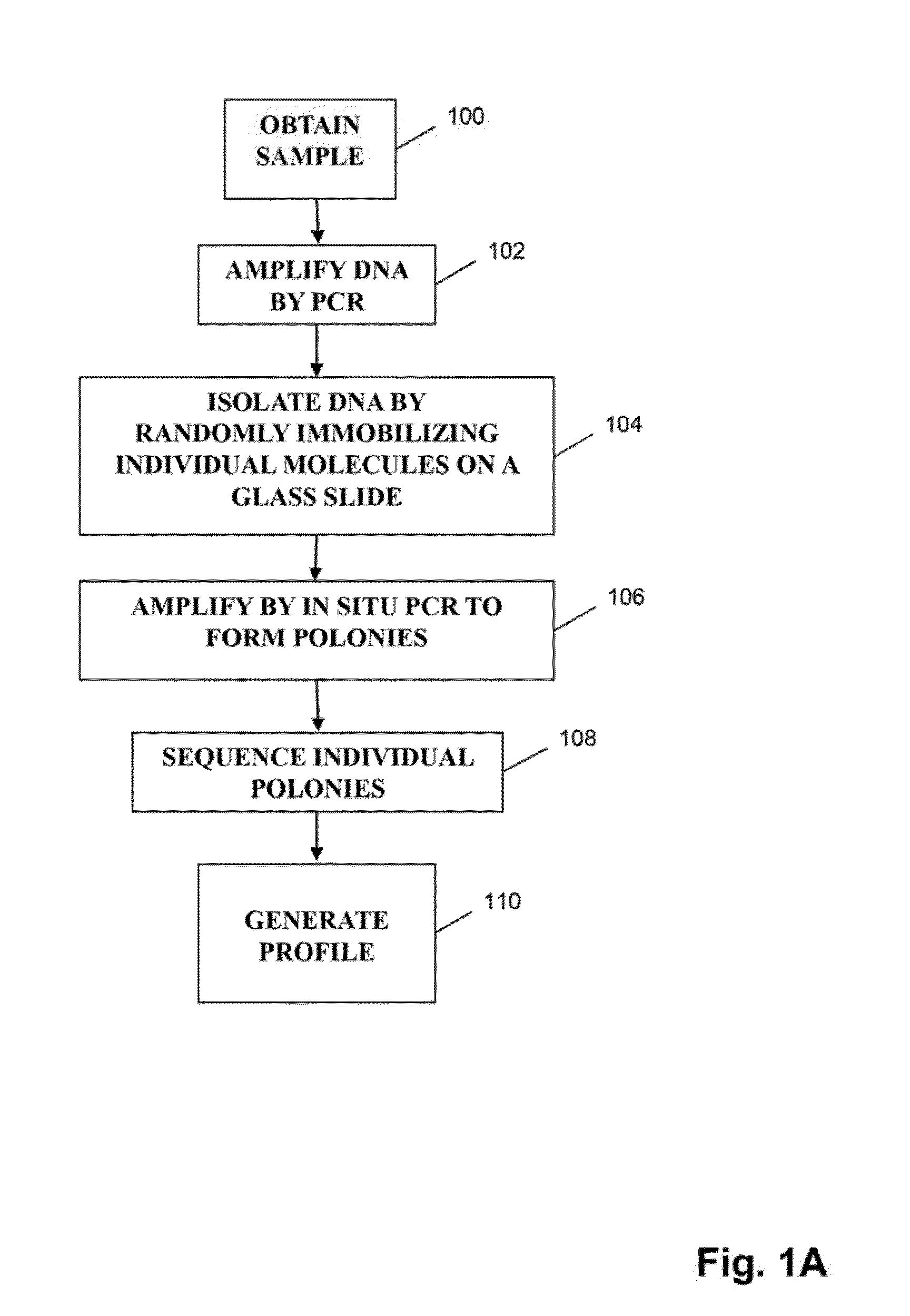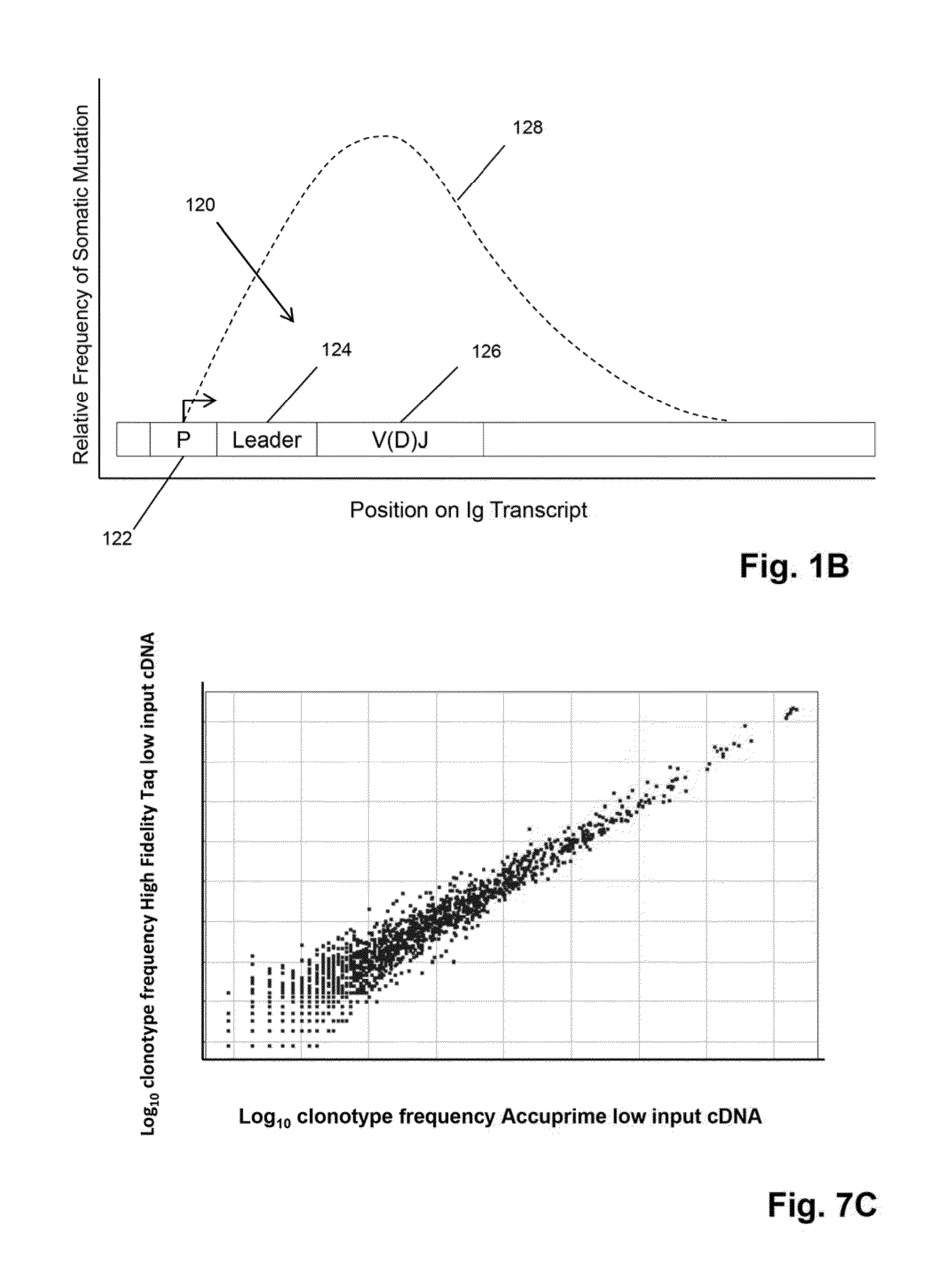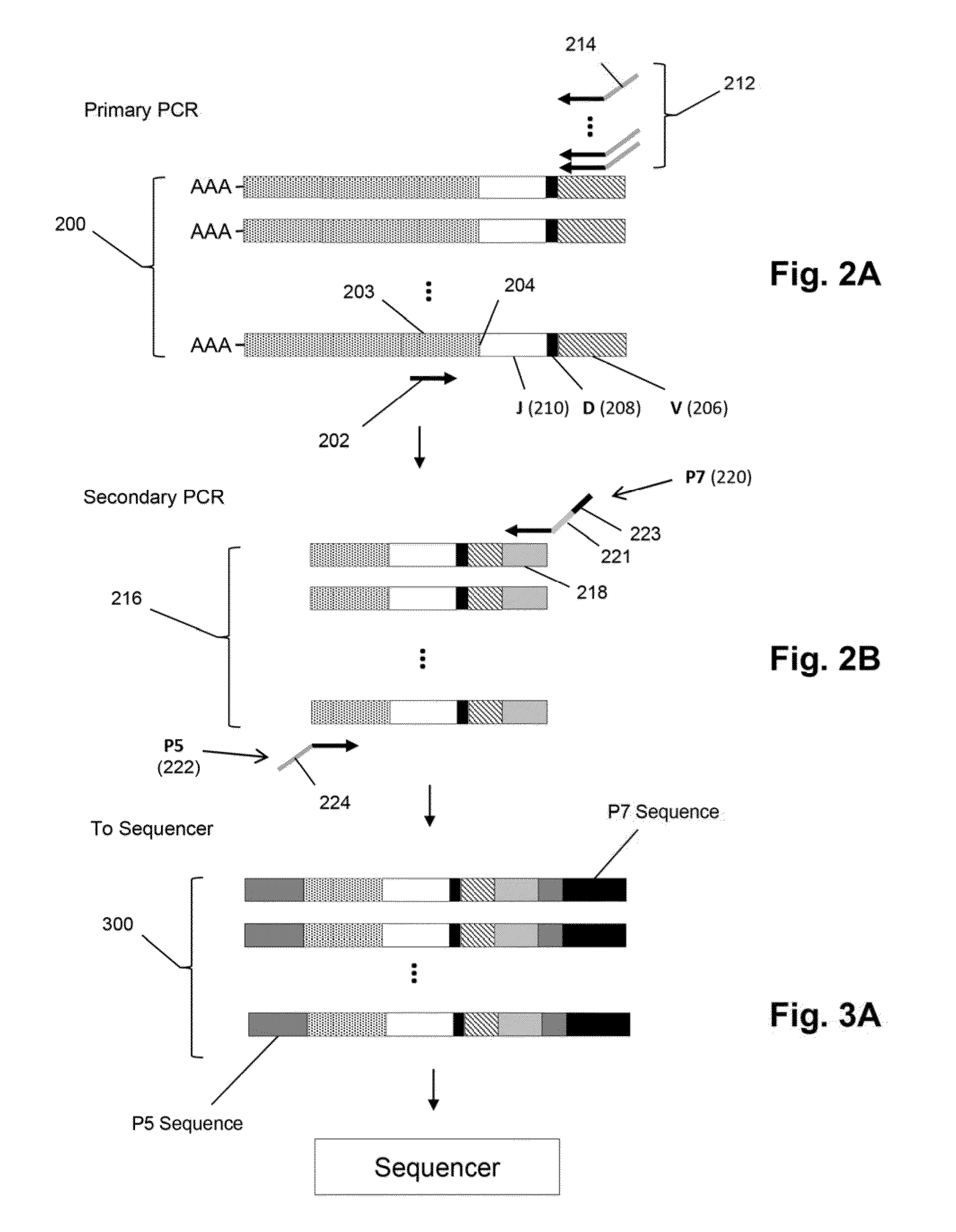Sequence analysis of complex amplicons
a sequence analysis and complex technology, applied in combinational chemistry, biochemistry apparatus and processes, library member identification, etc., can solve the problems of significant challenges in sequence analysis of useful profiles, and achieve the effect of decreasing quality scores and decreasing quality scores
- Summary
- Abstract
- Description
- Claims
- Application Information
AI Technical Summary
Benefits of technology
Problems solved by technology
Method used
Image
Examples
example 1
TCRβ Repertoire Analysis
Amplification and Sequencing Strategy
[0092]In this example, TCRβ chains are analyzed. The analysis includes amplification, sequencing, and analyzing the TCRβ sequences. One primer AGCGACCTCGGGTGGGAACA (SEQ ID NO: 1) is complementary to a common sequence in Cβ1 and Cβ2, and there are 34 V primers (Table 1) capable of amplifying all 48 V segments. Cβ1 or Cβ2 differ from each other at position 10 and 14 from the J / C junction. The primer for Cβ1 and Cβ2 ends at position 16 bp and has no preference for Cβ1 or Cβ2.
[0093]The 34 V primers are modified from an original set of primers disclosed in Van Dongen et al, U.S. patent publication 2006 / 0234234, which is incorporated herein by reference.
TABLE 1Primer sequences complementary to the differentV families.SEQIDV segment familyPrimer SequenceNOV20-1AACTATGTTTTGGTATCGTCAGT2V29-1TTCTGGTACCGTCAGCAAC3V9, 5-1, 5-6, 5-5,AGTGTATCCTGGTACCAACAG45-8, 5-4AV9, 5-1, 5-6, 5-5,AGTGTGTACTGGTACCAACAG55-8, 5-4BV9, 5-1, 5-6, 5-5,ACTGTGT...
example 2
IgH Repertoire Analysis
Amplification and Sequencing Strategy
[0103]In this example, three primers are used to amplify V regions of IgH molecules. Preferably, the primers are in regions avoiding the CDRs, which have the highest frequency of somatic mutations. Three different amplification reactions are performed. In each reaction, each of the V segments is amplified by one of the three primers and all will use the same C segment primers. The primers in each of the separate reactions are approximately the same distance from the V-D joint and different distances with respect to the primers in different reactions, so that the primers of the three reactions are spaced apart along the V segment. Assuming the last position of the V segment as 0, then the first set of primers (frame A) have the 3′ end at approximately −255, the second set (frame B) have the 3′ end at approximately −160, and the third set (frame C) have the 3′ end at approximately −30. Given the homology between several V seg...
example 3
Amplification of IgH Sequences from Genomic DNA
[0107]In this example, amplification of IgH sequences from genomic DNA is described. Such amplification is advantageous because (1) the level of a clonotype in genomic DNA can be readily converted to number of cells, and (2) in some lymphoid neoplasms, RNA may not be expressed for the relevant immune receptor rearrangement.
[0108]Amplification of immune receptor rearrangement is important for the detection of lymphoid neoplasms. B cell neoplasms are more common than T cell tumors and IgH is the most common rearranged immune receptor in B cell neoplasms. Because of somatic hypermutation, reliability of amplifying of IgH from genomic DNA may be increase by amplifying with multiple primers for each V segment, although there is a risk of differential amplification. In amplification from genomic DNA, the same V primers were used that were used in amplification from cDNA. Each V segment is amplified by 3 primers (in 3 distinct regions of the V...
PUM
 Login to View More
Login to View More Abstract
Description
Claims
Application Information
 Login to View More
Login to View More - R&D
- Intellectual Property
- Life Sciences
- Materials
- Tech Scout
- Unparalleled Data Quality
- Higher Quality Content
- 60% Fewer Hallucinations
Browse by: Latest US Patents, China's latest patents, Technical Efficacy Thesaurus, Application Domain, Technology Topic, Popular Technical Reports.
© 2025 PatSnap. All rights reserved.Legal|Privacy policy|Modern Slavery Act Transparency Statement|Sitemap|About US| Contact US: help@patsnap.com



